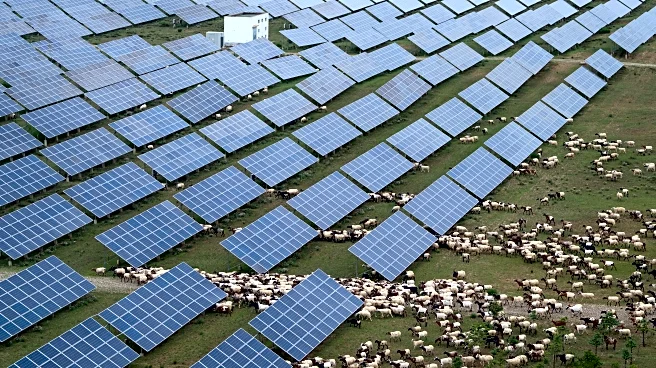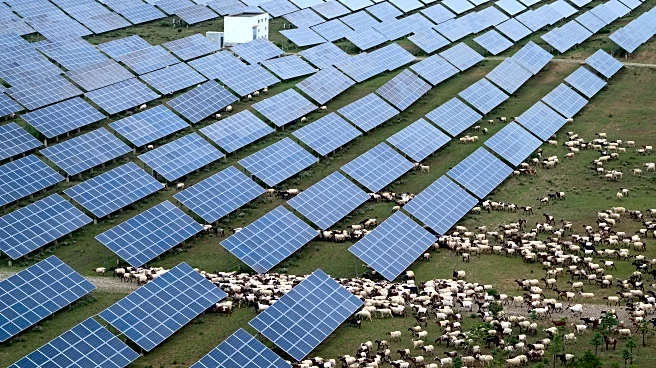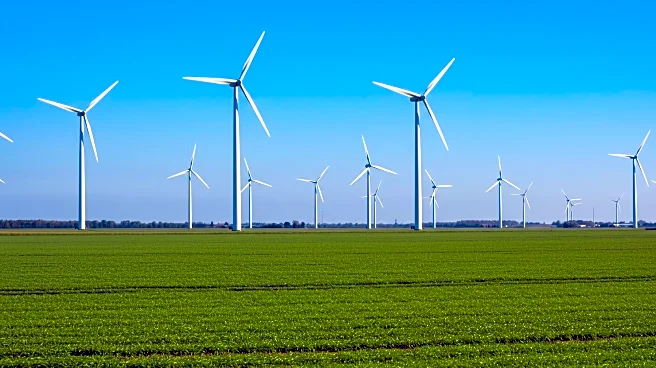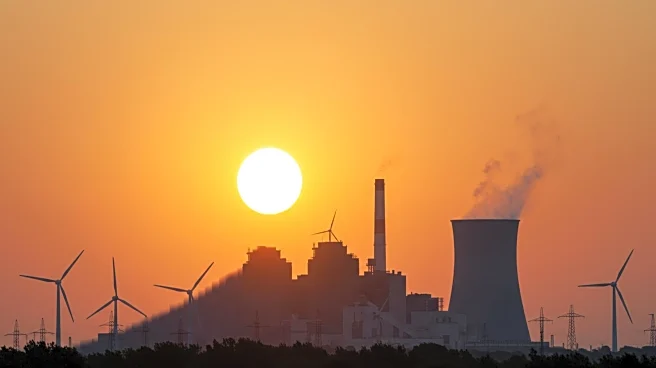Rapid Read • 7 min read
China is rapidly expanding its solar energy capacity, with officials showcasing what is expected to be the world's largest solar farm on the Tibetan plateau. The country installed 212 gigawatts of solar capacity in the first half of the year, surpassing the entire solar capacity of the United States. This expansion has contributed to a 1% decline in China's carbon emissions in the first six months of the year, marking a structural decline in emissions. The growth in solar, wind, and nuclear energy has outpaced the increase in electricity demand, which rose by 3.7% during the same period. This development is seen as a turning point in China's efforts to combat climate change.
AD
China's solar expansion is significant for global climate change efforts, as the country is the world's largest emitter of greenhouse gases. The decline in emissions suggests that China may have peaked its carbon output ahead of its 2030 target, offering hope for global climate initiatives. The shift to renewable energy sources demonstrates that economic growth can be achieved alongside emissions reduction. However, China's reliance on coal remains a challenge, and further efforts are needed to transition to less resource-intensive sectors. The success of China's solar expansion could influence other countries to increase their investment in renewable energy.
China plans to continue its solar expansion, with additional transmission lines to distribute electricity from the sparsely populated west to industrial centers in the east. Policymakers are working to adapt the electricity grid to accommodate the variable output of renewable energy sources. The ongoing development of solar and wind farms, along with improvements in grid management, will be crucial for China to achieve its carbon neutrality goal by 2060.
AD
More Stories You Might Enjoy











